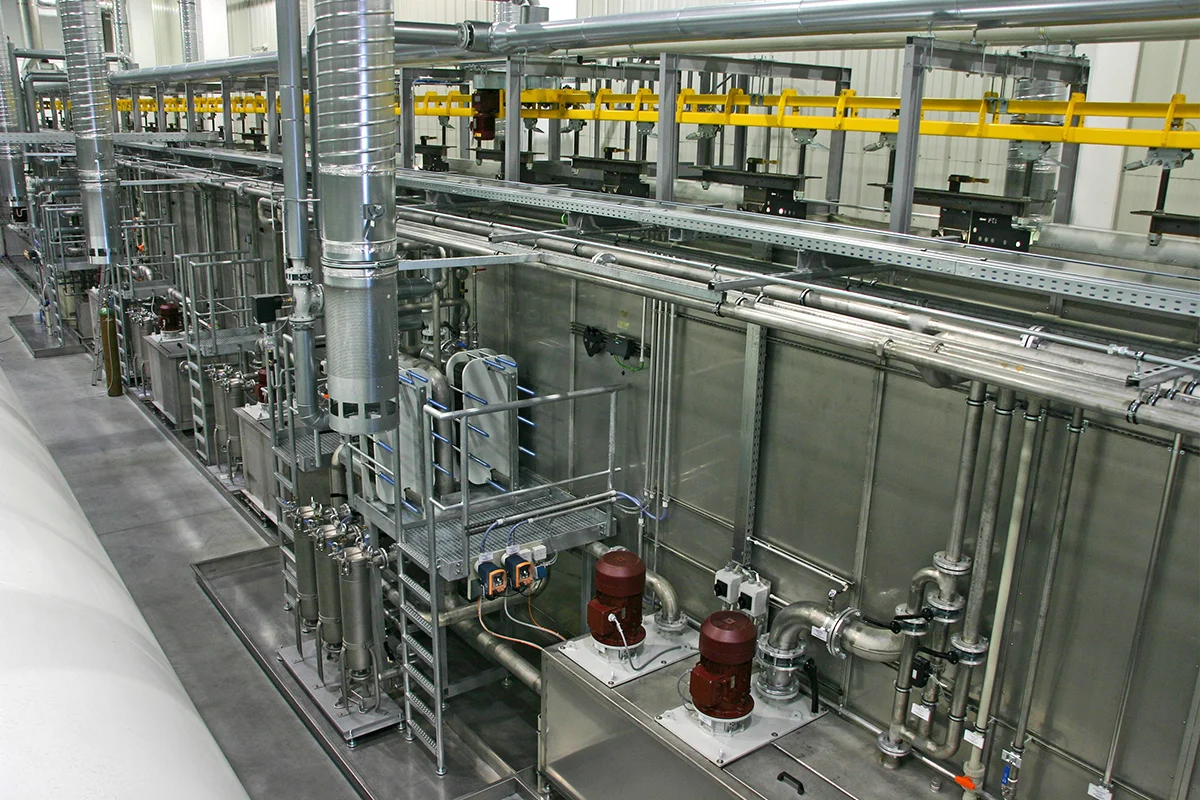
Clear records
history record

Products
Contact
Electrophoretic Coating Line
Electrophoretic Coating Line
I. Introduction
The electrophoretic coating line holds a central position in the field of high-efficiency corrosion protection, making it particularly suitable for large-scale manufacturing industries such as automotive and home appliances. Continuous advancements in technology drive improvements in coating performance and environmental compliance, with future developments expected to move toward greater intelligence and eco-friendliness.
II. Application Areas
With its high efficiency, environmental friendliness, and excellent coating performance, electrophoretic coating technology is widely applied in the following fields:
1. Automotive Industry
Body Coating: Base coat application for vehicle bodies and components (such as doors and hoods), providing a uniform anti-corrosion layer.
Components: Suitable for complex structures like wheels, chassis, and suspension systems, ensuring full coverage, including hard-to-reach areas.
2. Home Appliance Manufacturing
White Goods: Anti-rust and decorative coatings for refrigerator and washing machine exteriors.
Small Appliances: Corrosion-resistant treatment for metal components (e.g., microwave oven cavities).
3. Industrial Equipment
Machinery: Corrosion protection coatings for agricultural and construction machinery, adapting to harsh outdoor environments.
Metal Framework: Rust protection for shelves and storage equipment.
4. Electronics and Electrical Industry
Precision Components: Insulation and protection for small metal parts like radiators and connectors.
Casings: Weather-resistant coatings for instruments, meters, and motor housings.
5. Building Materials and Hardware
Door and Window Profiles: Decorative and weather-resistant coatings for aluminum alloy doors and windows.
Pipes/Metal Furniture: Rust prevention and aesthetic finishing for water pipes and office furniture.
6. Aerospace
Aircraft Components: Lightweight, high-corrosion-resistant coatings for landing gear and internal structural parts.
7. New Energy Sector
Battery Components: Protection for electric vehicle battery casings and metal parts of charging stations.
III. Technical Overview
1. Basic Principles
Electrochemical Deposition: The workpiece is immersed in an electrophoretic tank, where charged coating particles migrate under a direct current electric field and deposit onto the workpiece surface, forming a dense coating.
2. Core Process Flow
Pre-treatment
Degreasing and Rust Removal: Alkaline degreasing agent cleaning and acid pickling to remove oxide layers.
Phosphating/Silanization: Formation of a micron-level conversion film to enhance coating adhesion.
Electrophoretic Coating
Parameter Control: Voltage (100-400V), time (2-5 minutes), bath temperature (20-30°C).
Film Thickness Adjustment: Controlled by voltage and time, with a typical thickness of 15-30μm.
Post-treatment
Ultrafiltration Rinse: Recovery of residual paint to minimize waste.
Baking and Curing: Baking at 160-200°C for 20-30 minutes to form a cross-linked cured coating.
VI. Technical Advantages
Coating Quality: Full coverage with no dead angles, uniform on edges and weld seams, and corrosion resistance lasting over ten years (e.g., for car bodies).
Environmental Friendliness: Water-based coatings with low VOC emissions, over 95% paint utilization, and reduced pollution.
Efficiency: Automated production line suitable for mass production (e.g., automotive factories processing hundreds of workpieces per hour).
V. Development Trends
Environmental Upgrades: Development of lead-free and heavy-metal-free coatings to comply with EU REACH regulations.
Intelligent Automation: AI real-time monitoring of bath parameters and automated replenishment systems.
Hybrid Processes: Integration with powder coating and paint spraying techniques.










